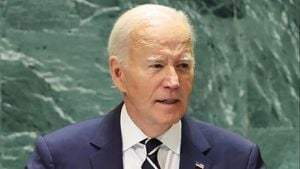Extinction, something that is often associated with the distant past, is sadly an ongoing event. While woolly mammoths and dinosaurs tend to dominate our imagination when we think of extinct animals, many species have vanished just in recent years. According to the International Union for the Conservation of Nature (IUCN) Red List, over 42,000 species are at risk of extinction. This marks a concerning trend, suggesting that we are currently in the middle of the planet's sixth mass extinction, largely driven by human activity.
The golden toad of Costa Rica was one such casualty. Officially declared extinct in 2019, this species, known for its brilliant coloration, fell victim to climate change. These toads depended heavily on consistent rainfall for reproduction. The changing climate patterns caused either too much or too little rainfall, stranding the larvae or dehydrating the toads beyond repair. With the environmental odds stacked against them, the golden toad could no longer reproduce, leading to their eventual demise.
Similarly, the Pinta giant tortoise, or more famously 'Lonesome George,' succumbed to extinction in 2012. George, the last of his kind, endured under human care for four decades. Scientists made numerous attempts to breed him with female tortoises of related species, but to no avail. His death was a poignant reminder of the fragile existence of many species.
Amphibians have particularly faced the brunt of human activities and natural threats. The mountain mist frog from Australia, declared extinct in 2021, fell prey to the chytrid fungus. This pathogen, catastrophic for amphibians, has led to the decline of 501 species. It infects amphibians by damaging their skin, making it nearly impossible for them to survive. The sharp-snouted day frog shares a similar fate, with logging, mining, and invasive species contributing to its extinction.
The Chinese paddlefish was another significant loss. Found in the Yangtze River and known as one of the largest freshwater fish, it was declared extinct in 2019. Overfishing and dam construction sealed its fate, proving detrimental to its population.
Another vivid example is the Bramble Cay melomys, a small rodent from an island between Australia and Papua New Guinea. Often cited as the first mammalian extinction driven by climate change, the Bramble Cay melomys lost its habitat to storms and rising sea levels. The final confirmation of its extinction came in 2019, echoing the broader impacts of climate change on wildlife.
'Protecting the planet and the plants and animals that we share it with is everyone's responsibility,' reads a statement from the International Fund for Animal Welfare. This sentiment underlines the urgent need for conservation. Efforts like the US Endangered Species Act (ESA), which collaborates with agencies like the National Oceanic and Atmospheric Administration (NOAA), have been instrumental in saving species, boasting a 99% success rate for listed species. However, the occasional extinctions remind us of the continuous effort needed to balance our ecosystems.
While conservationists worldwide strive to address habitat destruction, climate change remains a perennial concern. Many species, like the splendid poison frog and the sharp-snouted day frog, see dual threats from both natural pathogens and human activities. The sudden disappearances of such species make conservation strategies exceedingly challenging.
Balancing human development and conservation measures is a daunting task. The Christmas Island pipistrelle bat and whiptail-skink represent the delicate equilibrium needed. Despite forests being intact, invasive species competed and preyed upon these animals, leading to their extinction. Similarly, the introduction of the Indian wolf snake to Christmas Island in the 1980s severely impacted native wildlife, including the whiptail-skink.
Species like the Po‘ouli—a bird from Maui, Hawaii, discovered only in 1973 and extinct by 2019—underscore the suddenness with which we can lose biodiversity. Predation, habitat destruction, and invasive species had aggressively chipped away at their numbers. Likewise, the Alagoas foliage-gleaner bird from Brazil suffered from deforestation, driving it to extinction by 2019.
Future conservation initiatives need to account for these multifaceted threats. Invasive species, climate change, habitat destruction, and illegal pet trade are only a few hurdles in a long race to preserve biodiversity. An example from the present is the cryptic treehunter bird, discovered in 2014 but declared extinct even before significant conservation actions could be taken.
The continuous threat reminders and the stories of recent extinctions compel a collective human response. Whether it is the isolated island species like the Kaua‘i ‘akialoa or broader-ranged animals like the Chinese paddlefish, the persistence of human-caused threats is a clarion call for greater action and awareness. Perhaps Lonesome George's fate, with the inscription outside his enclosure stating, 'Whatever happens to this single animal, let him always remind us that the fate of all living things on Earth is in human hands,' will intensify our resolve to save endangered species. Conservation is not solely about preserving what's beautiful or unique. It's a necessary step towards maintaining a balanced and viable ecosystem for future generations.



